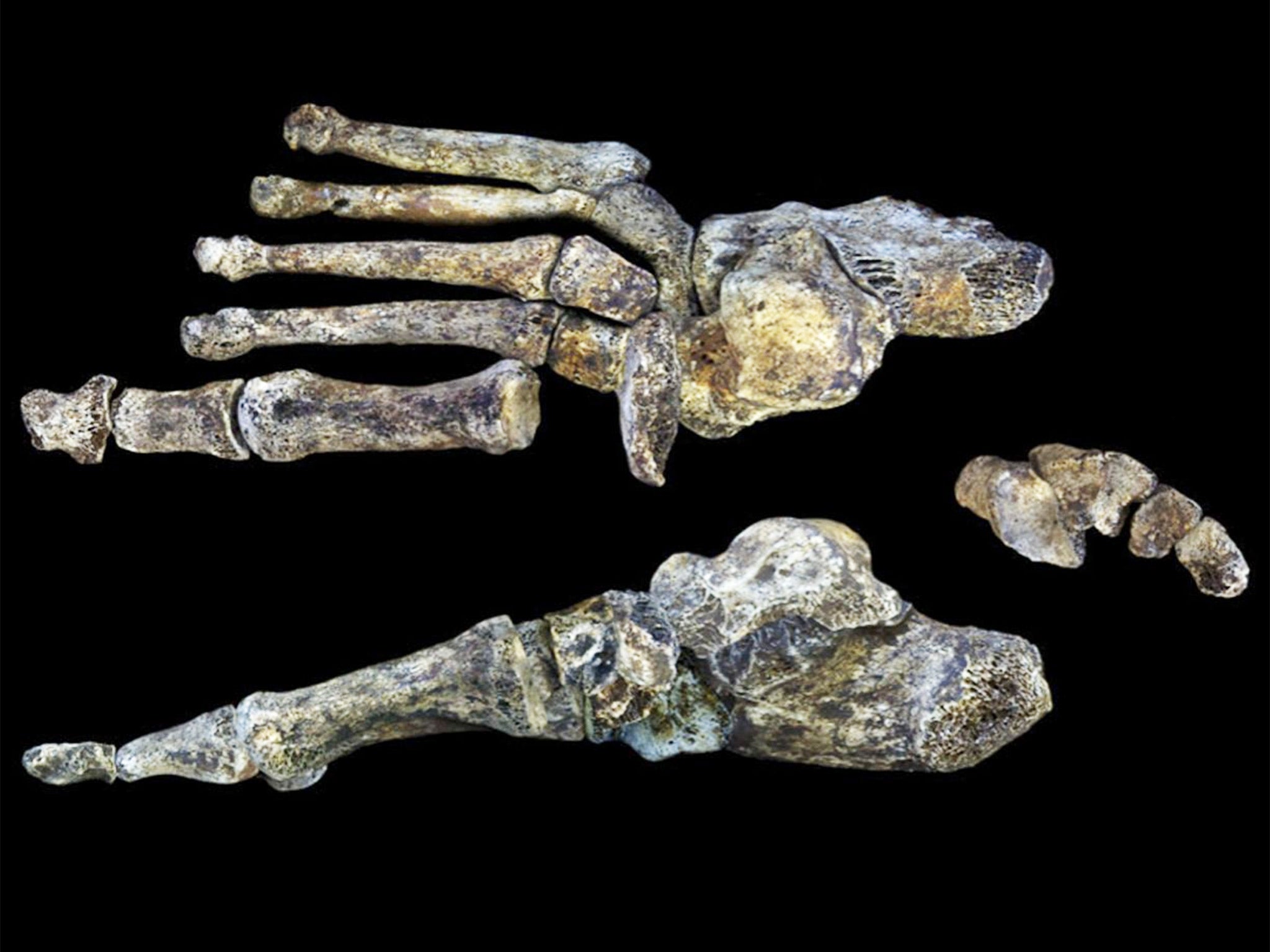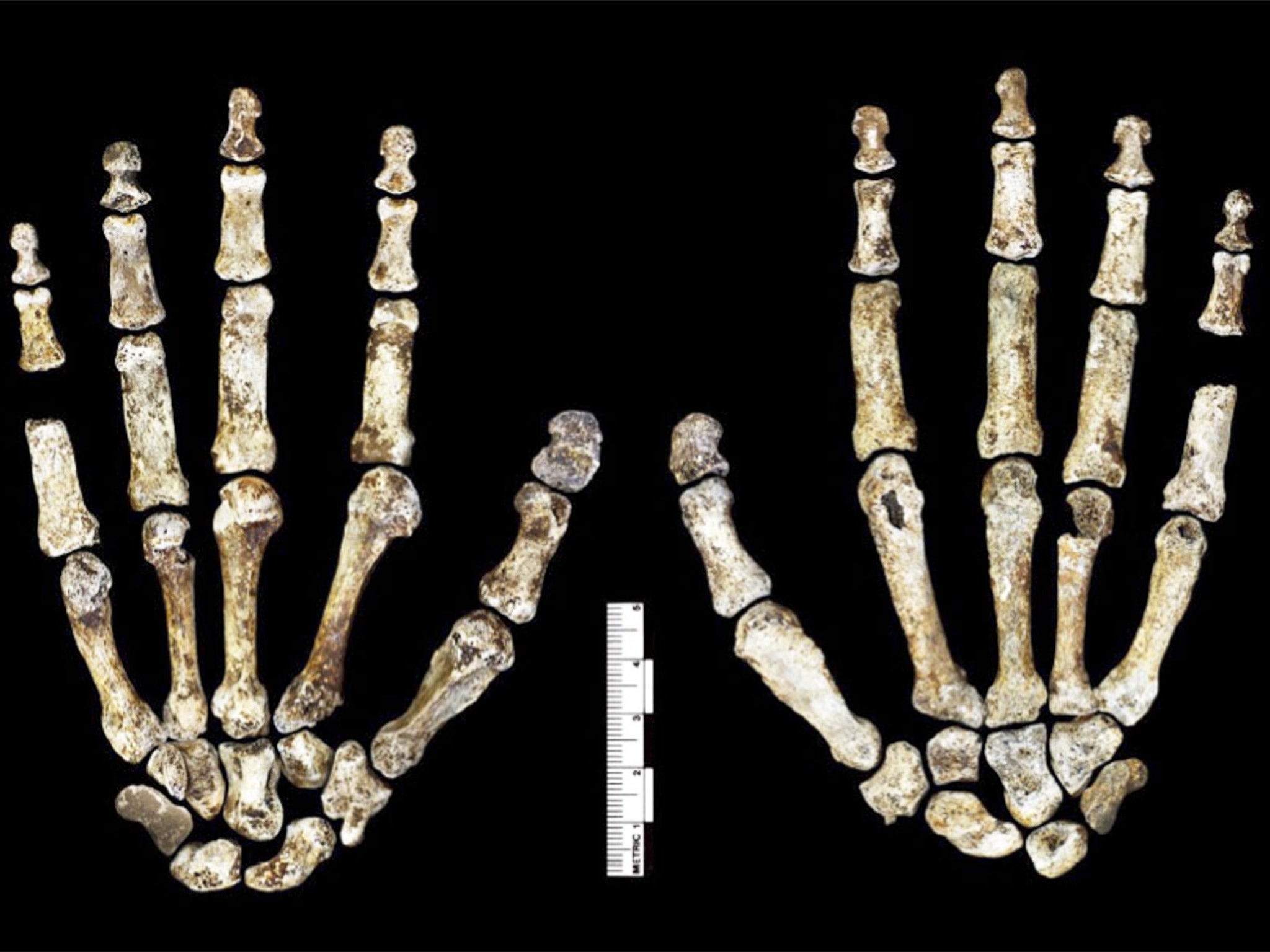Homo naledi: Newly-discovered human species 'walked on two feet and climbed trees'
Anatomical study of species that lived up to 2 million years ago suggests its long, curved toes made it a strong climber

A newly-discovered species of human that lived in Africa up to 2 million years ago was uniquely adapted for walking upright for long distances on the ground as well as climbing trees according to two anatomical studies of Homo naledi’s hand and foot.
The key features of the H. naledi’s hand show that the species was able to manipulate objects such as stone tools between its fingers and thumbs, yet its long, curved fingers demonstrate that it was also adapt at clambering among branches.

Scientists have also found that the H. naledi’s foot was similar to that of modern-day humans, indicating it was well adapted for walking on two feet. However, its relatively long, curved toes also suggest the species was a good climber when necessary.
The discovery of more than 1,550 fossilised bones belonging to at least 15 members of H. naledi in a cave system in South Africa has been described as one of the most significant ever made, certainly on the continent of Africa where the story of human origins began.
Scientists have never before come across so many fossilised remains of one species at one site, which appears to have been a deliberate burial chamber at the back of a deep cave accessible only through a long, narrow shaft less than 10 inch in diametre in places.
Excavations of the site have so far recovered nearly 150 hand bones, including a near-complete right hand from the Dinaldi chamber of the Rising Star cave system about 30 miles from Johannesburg. The scientists have found about 107 fossilised foot bones, including the well-preserved remains of an almost entire right foot.
The detailed anatomical descriptions of H. naledi’s hand and foot, published side by side in the journal Nature, show that while it shares many features in common with anatomically modern humans, H. naledi also possessed distinctly “primitive” features relating to a more arboreal existence.

“These markedly curved digits in combination with an otherwise human-like wrist and palm indicate a significant degree of climbing,” says one of the studies, led by Tracy Kivell of the University of Kent, working with paleontologists Lee Berger and Steven Churchill of the University of Witwatersrand.
Scientists have still to date to the fossils but the anatomy suggests that H. naledi lived around the time when the human genus, Homo, evolved from ape-like creatures known as the Australopithecines, they said. However, despite being no more than 5 feet tall and having a brain no bigger than an orange, Professor Berger believes the species went in for the ritual burial of their dead, something considered to be unique to more modern humans.
Some parts of the skeleton such as the hips show primitive features going back to ape-like ancestors while others such as the small teeth are more like modern humans.
Join our commenting forum
Join thought-provoking conversations, follow other Independent readers and see their replies
Comments